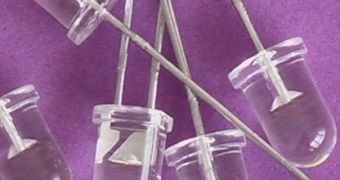The battle format is about to end with a double-knockout, as two famous LED technology developer companies are cooking a new successor to rule over high-definition formats. Just as we thought Blu-Ray is about to become the next stable standard, Kaai and Soraa are trying to develop lasers and LEDs that will change once again the Hi-Def storage market.
The two startups are stealthily cooking new types of optical technology to replace the nowadays' LEDs in the lighting market and create a new optical media storage standard. The news come from Ford Tamer, junior partner at Khosla Ventures, one of the companies that pour money in the two startups' research.
According to Tamer, the Khosla Ventures company invests in small startups that have reached the research phase, a time when non-disclosure is a critical condition. That is why both Kaai and Soraa are extremely cautious about the amount of information that reaches the media. However, Tamer claims that both companies are concerned with light technology and optical data storage.
Tamer hints at the fact that the two "aa" sister companies will take another approach at gallium nitride, a gallium salt that forms the technological basis for both blue lasers and blue light-emitting diodes (LEDs). Despite the fact that the two startups are collaborating, their technological processes are radically different from each other. According to Tamer, the blue lasers are used inside the current Blu-Ray optical devices, yet they cost too much, in spite of their popularity.
The two startups may be young, but they are extremely tech-powerful. Their founders are important figures in the optical storage industry. Both Shuji Nakamura and Stephen DenBaars are the inventors and advancers of the blue-light diode. For instance, Nakamura invented the blue LED in the early '90s during its stay at Nichia. The blue lasers are now the cornerstone of Blu-Ray units.
DenBaars is a professor at the University of California at Santa Barbara, and is one of the most important researchers on LEDs. "They found the next breakthrough in LEDs in 2000 and they have been working on it for seven years," said Tamer, referring to Nakamura and DenBaars.

 14 DAY TRIAL //
14 DAY TRIAL //